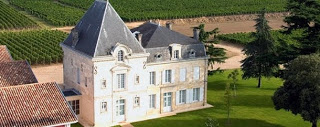The Chateau L’Evangile was acquired by the  Domaines Barons de Rothschild (Lafite) in 1990 – as Baron Eric de Rothschild said “We could never resist to an extraordinary, unique terroir. Very different from the Médoc but absolutely outstanding”. In fact in years past L’Evangile was second only to Petrus in Pomerol.
Domaines Barons de Rothschild (Lafite) in 1990 – as Baron Eric de Rothschild said “We could never resist to an extraordinary, unique terroir. Very different from the Médoc but absolutely outstanding”. In fact in years past L’Evangile was second only to Petrus in Pomerol.
Once in Rothschild hands a programme of renovation and rejuvenation got under way at L’Evangile – a Second Wine, Blason de L’Evangile, was produced and a new circular chai and barrel cellars were built in the same style as Chateau Lafite – a suggestion by the Baron Eric, who described it as “a Little Lafite”. Maybe he had a point – in the second edition of Cocks Féret in 1868, L’Evangile is registered and is  considered as an “Upper Pomerol 1st Growth Wine”.
considered as an “Upper Pomerol 1st Growth Wine”.
L’Evangile lies on the eastern outskirts on the plateau of Pomerol neighbouring Vieux Château Certan and La Conseillante. The south east Pomerol plateau features a long line of stones. Three vineyards, including L’Evangile, share this rare soil. The estate occupies a very strategic p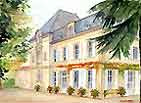 osition. It is bordered to the north by the vineyards of Pétrus, and is separated from Cheval Blanc in Saint Emilion to the south by nothing more than a secondary road. The vineyards cover 35 acres and are planted with 78% Merlot and 22% Cabernet Franc.
osition. It is bordered to the north by the vineyards of Pétrus, and is separated from Cheval Blanc in Saint Emilion to the south by nothing more than a secondary road. The vineyards cover 35 acres and are planted with 78% Merlot and 22% Cabernet Franc.
Pomerol is the smallest wine producing area in Bordeaux however although it is tiny, Pomerol is famous world over. The Pomerol estates are unclassified and there are no grand chateaux buildings there, partly due to the fact that the Commandery of the Kni ghts Hospitaller took possession of Pomerol in the 12th Century.
ghts Hospitaller took possession of Pomerol in the 12th Century.
The Knights Hospitaller is a Christian order that began as an Amalfitan hospital founded in Jerusalem in approximately 1080 to provide care for poor, sick or injured pilgrims to the Holy Land.
During the ages it has not always borne the same name. Known as Hospitallers of Jerusalem until 1309, the members were called Knights o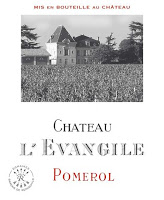 f Rhodes from 1309 till 1522, and have been called Knights of Malta since 1530.
f Rhodes from 1309 till 1522, and have been called Knights of Malta since 1530.
After the Western Christian reconquest of Jerusalem in 1099 during the First Crusade, it became a religious/military order under its own charter, and was charged with the care and defence of the Holy Land.
Following the conquest of the Holy Land by Islamic forces, the Order operated from Rhodes, over which it was sovereign, and later from Malta where it administered a vassal state under the Spanish viceroy of Sicily.
The Pomerol Commandery is the oldest Commandery in Aquitaine, whilst the oldest in France is Villedieu les Poëles, in Normandy. The Commander, a Seigneur but not a nobleman, naturally received the rents and the annual dues in both money and goods from each of the tenants. L’Evangile can be traced back to 1620 as the tenement of “La Barrau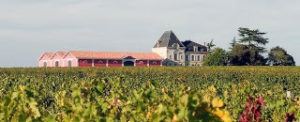 derie”. The estate came to be known as Fazilleau in 1659 on the marriage of the tenant’s eldest daughter, Catherine Pipaud, to Guy Fazilleau. The Fazilleau family had been known in the area since 1580 and brought the farm of Mautretat with them to be included in the estate.
derie”. The estate came to be known as Fazilleau in 1659 on the marriage of the tenant’s eldest daughter, Catherine Pipaud, to Guy Fazilleau. The Fazilleau family had been known in the area since 1580 and brought the farm of Mautretat with them to be included in the estate.
In 1718, the curate, Jean-Baptiste Léglise, began to buy land from L’Evangile – eventually acquiring all of it by 1727 – apart from one plot that was acquired by Catherine Conseillante of Chateau Conseillante. By this time the estate was well known for its wines and was certainly being taken seriously. It was valued at 8,000 pounds in the later 1700s and appears in the famous “Belleyme Map” of 1785. (Pierre de Belleyme was the Royal Geographer for King Louis XV.)
In 1798 the estate was bought by the Public Notary Pierre-Raymond Isambert and it was he who decided to call the property by its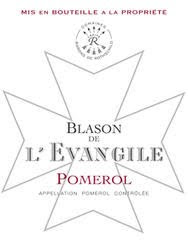 present name – L’Evangile. The tale goes that he did not like the name Fazilleau because of the “eau” in it, which is French for water. He did not think it sounded a good name for a wine!
present name – L’Evangile. The tale goes that he did not like the name Fazilleau because of the “eau” in it, which is French for water. He did not think it sounded a good name for a wine!
L’Evangile means The Gospel in French and Isambert knew that in 1673 Emery Fazilleau had been buried in the church in Libourne, “du côté de l’evangile”. This means “on the left side of the altar, where the gospel was read”.
To be buried here was a signal honour, normally reserved by the curate for very special persons and this seemed a suitable name for the estate. It’s also a fitting reminder of the estates’ Knights Hospitaller roots as is the label of the Second Wine which depicts the Hospitaller’s Cross.

